Improving Safety by Evaluating Near Misses
Risk ManagementThroughout our lives, we develop knowledge and wisdom, in part, by learning from our mistakes and those of others. In the context of outdoor education and adventure programming, we learn from both catastrophic events and near misses — close calls. These are events in which nearly every factor necessary to cause serious injury or death is present but catastrophe is averted due to the presence or absence of one or more conditions.
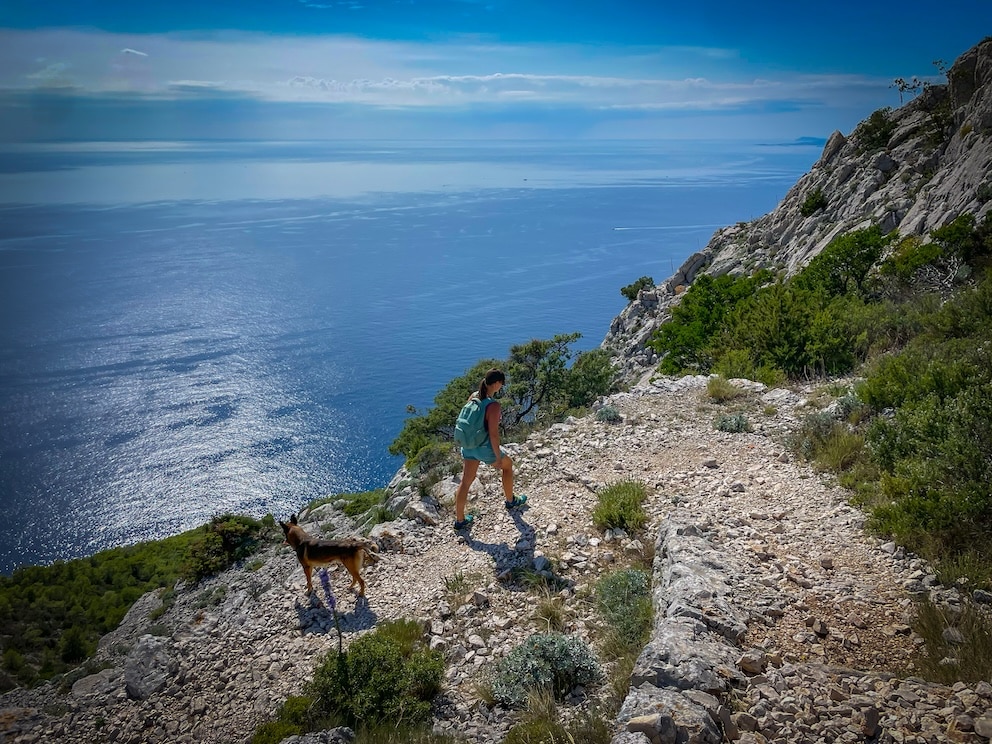
For example, imagine starting a rock climbing route and then realizing, when you’re 20 feet up, that you failed to do a specific knot check. You look down and can’t see the knot because your puffy jacket or a feature on the rock is obscuring your view. You look up and see that you have to climb about 60 feet more feet to reach an area of safety, and you’re unable to let go of the rock to get a better view of the knot, so you decide to descend. Upon reaching the ground, you discover that your knot was only half-tied.
Eventually, you’ll ponder:
- Would you have made it to the top of the climb without falling?
- Would the half-tied knot have held?
- Would a possible fall have resulted in injury?
The possible outcomes are numerous and uncertain, but the near miss is obvious, as is the lesson to be learned — don’t forget to check your knots before starting your ascent.
As Close as the Width of a Slice of Swiss Cheese
You can think of a near miss as being as close to disaster as the width of a slice of Swiss cheese. Why Swiss cheese? Because it has (more…)
Basic Versus Advanced Airway Management: Keeping It Simple (at First)
Emergency MedicineIn the backcountry, where hospitals are likely many miles away and help isn’t “just around the corner,” airway management becomes a high-stakes priority. After all, the statistics are against the patient. Without an open, clear airway, that patient has a zero percent chance of survival.
Whether it’s a fall, an allergic reaction, choking, or a drowning, keeping the airway open is a life and death proposition. Wilderness medicine demands quick thinking, decisive action, and a solid grasp of airway basics, because you’re the first, and perhaps only, responder.
This post brings you up to speed on airway management basics with a focus of first employing the simplest and least invasive methods for opening the airway.
What Is the Airway?
The airway is a tunnel connecting the mouth and nose to the lungs. It ends at the alveoli, which are the tiny air sacs in the lungs that facilitate the exchange of gases, primarily oxygen and carbon dioxide. As long as this tunnel remains open, a person can breathe. If the tunnel collapses or is blocked at any point, breathing ceases or is restricted to some degree.
Healthy humans maintain an open airway by holding their head upright, swallowing their secretions, controlling their tongue, coughing, spitting, and otherwise emptying the tunnel of everything but air. Whenever the airway collapses due to illness or injury or is blocked by solids or liquids “going down the wrong pipe” and getting stuck there, medical intervention is required. That’s where you, the emergency medical technician (EMT), or someone else who’s received the relevant training, must step in to clear the airway.
The interventions used by the EMT can be divided into Basic (simpler and less invasive) and Advanced (more complex and invasive).
Basic Methods for Clearing the Airway
When someone can’t breathe or is struggling to do so, you should use the simplest, least intrusive method necessary to open the airway. Basic methods include the following: (more…)
Wilderness Medicine and First Aid: Knowing What to Pack
Wilderness MedicineBackcountry and wilderness expeditions and daytrips can be a blast! One minute you’re stimulated by the views and having fun, and in some instances, the next minute you’re on the ground after tripping on a rock, asking yourself, “Where did all that blood come from?”
Having the right medical supplies can turn a potential disaster into just another compelling campfire story. The question is, what medical supplies are the right ones? What items should you carry in your adventure-based first aid kit? What do you need and what can you do without?
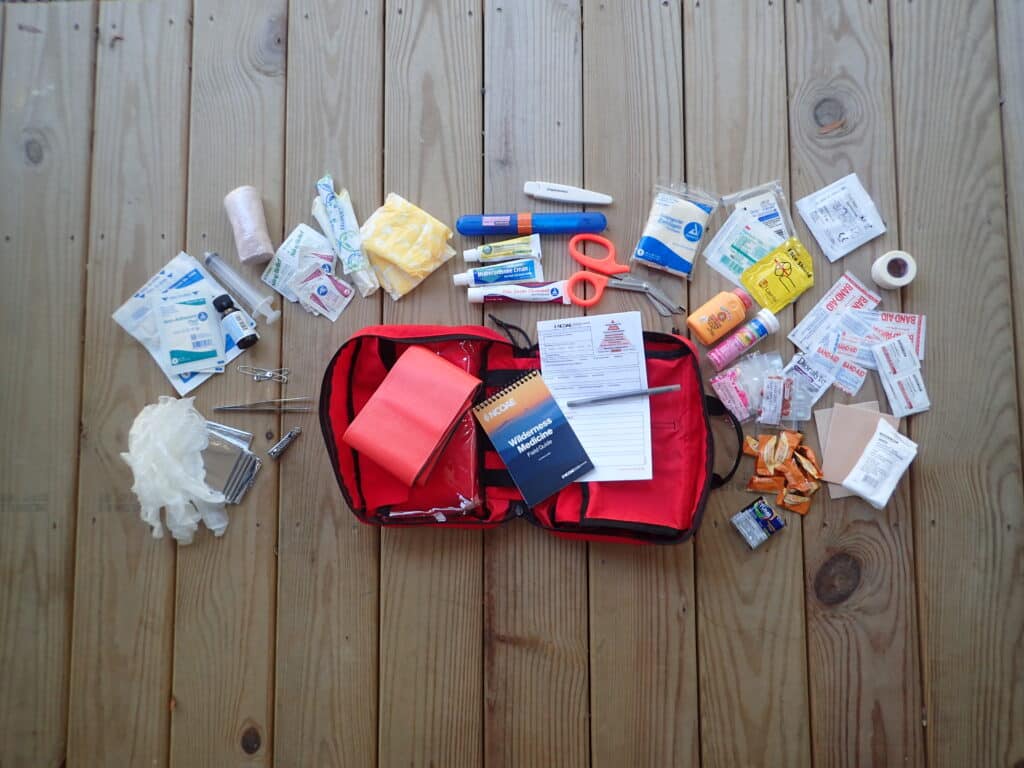
The answers to those questions are elusive, and for good reason; they vary based on several factors, including the following:
- The terrain you plan to traverse (forest, mountains, wetlands, etc.)
- The activities you’ll engage in (hiking, climbing, kayaking, etc.)
- Group size and composition (for example, if someone in your party has a history of bleeding or suffers severe allergic reactions)
- Trip length (time and distance)
In this post, I provide some general guidance on what items to include in your first aid kit, along with other points to ponder as you plan ahead for unexpected injuries and illnesses.
First Aid Kit or Boo Boo Bag?
The first decision you need to make is whether you’re packing a lifesaving focused first aid kit or a boo boo bag: (more…)
Words Matter: Speaking the Same Language in Wilderness Medicine
Wilderness MedicineLanguage provides a foundation for human progress. Having a common language enables us to communicate, collaborate, and coordinate our efforts in able us to achieve more together than any of us could possibly achieve on our own. It allows us to organize our thoughts and solve problems collectively.
It’s when we’re not speaking the same language, or we have a different understanding of the terminology being used, that chaos ensues. Take NASA’s Mars Climate Orbiter (aka Mars Surveyor ’98 Orbiter), for example. Launched on December 11, 1998, the spacecraft was lost because NASA used the International System of Units (metric), while the company that built the spacecraft, Lockheed Martin, used the United States customary units (imperial). That simple miscommunication caused the Mars Climate Orbiter to enter the Martian atmosphere on September 23, 1999, at the wrong angle and disintegrate.
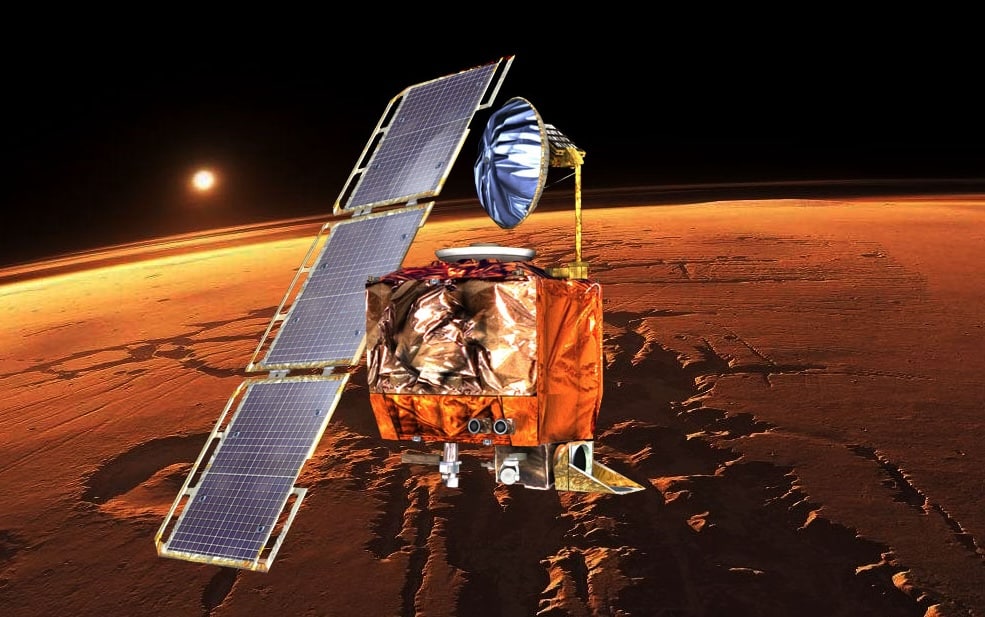
As practitioners of wilderness medicine, outdoor educators and others can learn valuable lessons from that story. After all, successful treatment outcomes often require close communication, collaboration, and coordination among treatment providers. Having a different understanding of the same terminology can result in serious negative consequences. This is especially true in life-threatening situations where the space between life and death can be as narrow as a razor’s edge. In these situations, using a common language can save lives.
In this post, we explore wilderness medicine terminology that’s a common source of misunderstandings. By increasing your awareness of how these terms are often used and understood, you can ensure that you and other members of the treatment team are communicating clearly and precisely.
Recognizing Terms That Can Be a Source of Confusion
Communication is so important that EMT textbooks often include an entire chapter or appendix on medical terminology. These terms and their definitions ensure clarity on everything from (more…)
Search and Rescue Basics for Wilderness Medicine
Wilderness MedicineAccording to some emergency medical professionals, including one of my early mentors, every emergency medical service (EMS) call involves a search. Even in urban settings where we’re given a home address for a patient, we need to confirm the location, find it, and gain access to the patient. And even after arriving at the right address, finding and gaining access to the patient within the home or building can be a challenge.
As a current or future Wilderness Medicine Care Provider, you may be called upon to provide care in diverse environments under a variety of circumstances — and you need to be prepared to do so. One of the environments we train for here at The National Center for Outdoor & Adventure Education (NCOAE) is the backcountry, more commonly referred to as the wilderness.
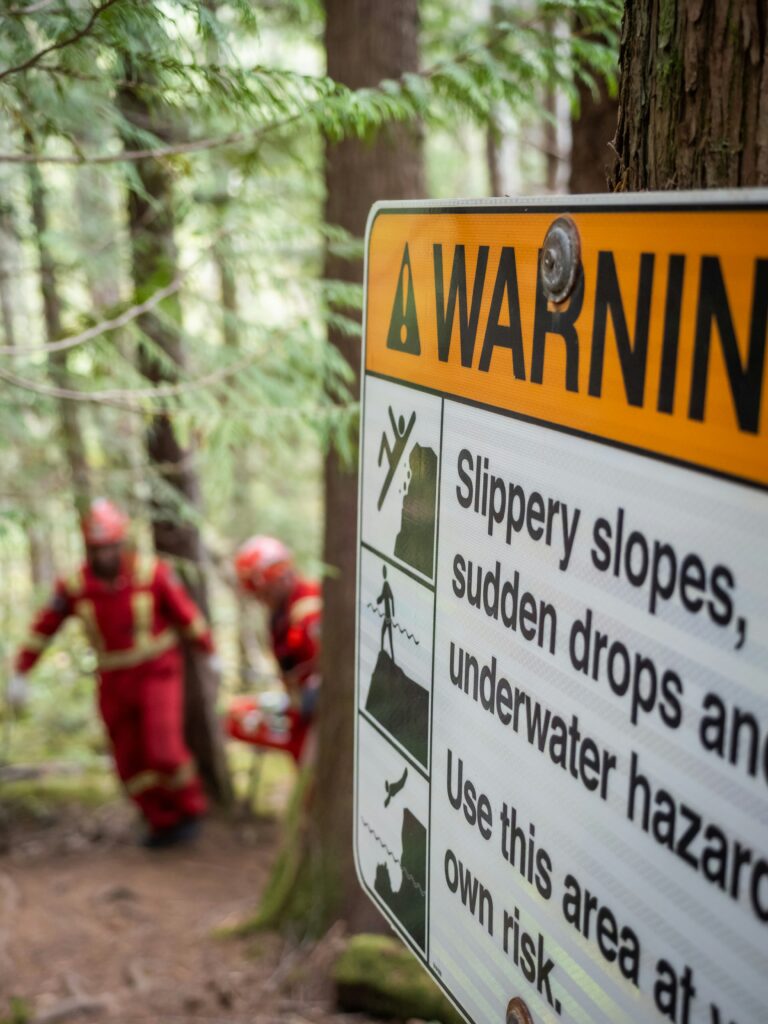
Wilderness medicine encompasses a broad range of scenarios, ranging from the simple treatment of basic cuts, scrapes, blisters, and bruises, to conducting complex search and rescue operations in remote areas, in dangerous weather conditions and across challenging terrain.
Patients are often those within an activity group or in a group nearby, but sometimes the incoming call notifies us of a problem in a remote, unclear location. In such cases, we need to find the patient before we can treat the patient, and in many cases, we need to move distressed individuals or parties to safety.
In this post, I bring you up to speed on the fundamentals of conducting search and rescue in diverse environments and unpredictable circumstances.
Defining Search and Rescue (SAR)
Wilderness medicine includes some complex and challenging diagnostic and treatment procedures. SAR adds another layer of complexity to make it even more challenging. To gain a better understanding of the challenges, consider what each of these tasks involves: (more…)
Oxygen at Altitude is a Major Consideration in Wilderness Medicine
Wilderness MedicineWilderness medicine covers an enormous area of study and practice. From anaphylaxis to zoonotic diseases, it covers a lot of glossary. From deep-water diving to high-altitude mountaineering, it covers a lot of territory including oxygen deprivation.
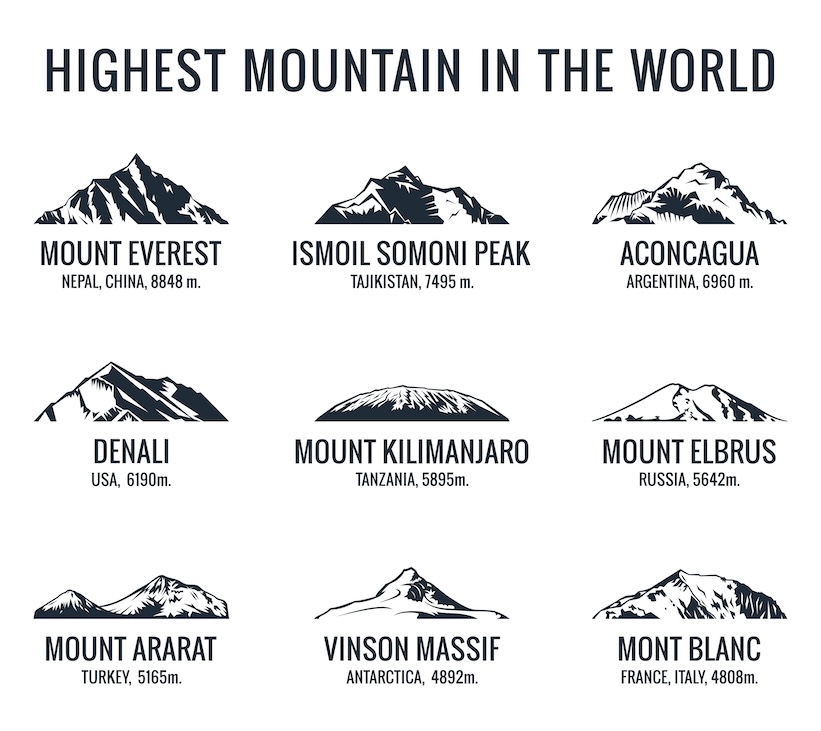
Mountain tourist vector logos set. Adventures Icon mount. Highest mountain in world. Everest and Ismoil Somoni Peak, Aconcagua, Denali, McKinley, Kilimanjaro, Elbrus, Ararat, Vinson Massif, Mont Blanc
In this post about wilderness medicine, we focus on four terms in that glossary to which every outdoor educator and backcountry/wilderness guide should be aware:
Oxygen is a gas comprised of two oxygen molecules bound together (O2), that’s essential for the survival of most earthly lifeforms. You can live without food for several weeks, without water for several days, but only a few minutes without oxygen.
Atmosphere is the gaseous mass that surrounds a celestial body like Earth. Earth’s atmosphere is composed of about 78 percent nitrogen, 21 percent oxygen, 0.93 percent argon, and 0.04 percent carbon dioxide, along with trace amounts of other gases and variable water vapor. This gaseous “envelope” is divided into layers ranging from the troposphere to the thermosphere, with the percentage of oxygen remaining the same in each of those layers. (more…)
Just the Facts: Recognizing the Importance of Reporting Accurate Information in a Wilderness Emergency
Wilderness MedicineIn the movie Die Hard 2, hero John McLane, played by Bruce Willis, receives a fax at a car rental kiosk at Dulles International Airport in Washington, D.C. informing him of the identity of a suspect. The agent behind the desk, who’s been flirting with McLane through the entire scene, says, “Hey, I close in about an hour. Maybe we can go get a drink?” McLane smiles coyly, points to the wedding ring on his finger, and replies, “Just the fax, ma’am. Just the fax.”
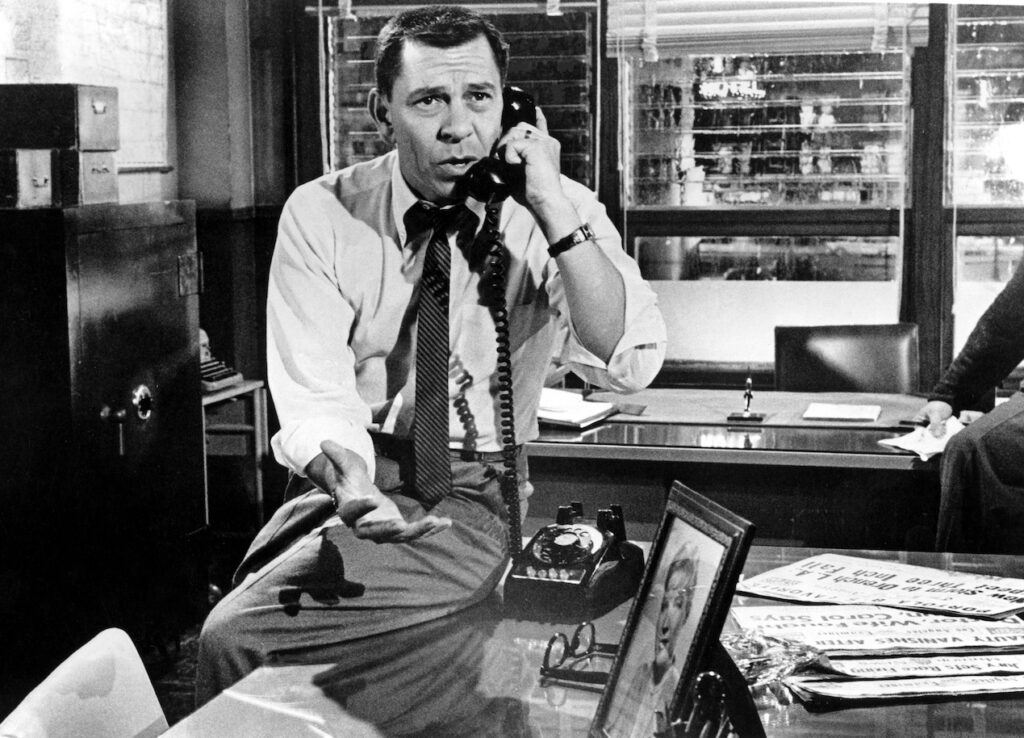
McLane’s line is a reference to the old TV show Dragnet, where the main character, Sgt. Joe Friday, would remind rambling or opiniated witnesses to stick to the facts by saying, “Just the facts, ma’am [or sir]. Just the facts.” That straight-forward statement can serve as a reminder for wilderness medicine providers when we’re responding to accidents or emergencies in remote settings.
In wilderness emergency medicine, collecting and reporting the facts can determine the difference between a positive and a negative outcome, or even between life and death.
Recognizing the Challenges of Reporting Accurate Information in Wilderness Medicine
In wilderness settings, the potential for communicating inaccurate information increases due to several factors, including distance, time lags, layers of patient care providers, and unreliable communication channels, including the absence of cell phone connectivity. First responders frequently face the daunting task of gathering information from people in stressful situations under challenging and changing conditions. In our wilderness medicine course, we teach about the importance of accurate information.
In addition, location information can be difficult to obtain and communicate. Even in an urban setting, first responders can have trouble distinguishing between similarly named roads, such as Bear Hollow Lane and Bear Hollow Road, or roads that have multiple names. In the wilderness, determining and communicating a specific location becomes even more challenging when certain ridges, pitches of a rock climb, or similarly named streams come into play.
Providing accurate and comprehensive information is important for several reasons, including the following: (more…)
Managing Fatalities in Wilderness
Wilderness MedicineIn the safety and comfort of the modern world, we often forget that the natural world can be a dangerous, unforgiving, and uncaring place. For many of us who love wilderness and the backcountry, that’s large part of its attraction.
We choose to explore areas where some fear to go, and we participate in activities that may straddle the line between the safe and perilous. But we do so, backed by best practices and training in wilderness risk management.
Mountaineering, rock climbing, and whitewater rafting can be dangerous undertakings, but even a leisurely hike through the backcountry carries risk. Wilderness emergency examples include entering an area teaming with unpredictable wildlife, crossing paths with a venomous snake, getting swept up in a flash flood, or encountering other unpredictable dangers.

Here at The National Center for Outdoor & Adventure Education (NCOAE), we take many precautions to mitigate the risks. Education, training, planning, and preparation can all limit the risk of injuries and preventable illnesses, and wilderness medicine training can help mitigate the fallout when injuries and illnesses do occur in remote settings.
But when we venture out into wilderness and engage in extreme activities, accidents can and do happen, sometimes the result of life-ending episodes. Unfortunately, we need to be prepared for that, too.
Gauging the Risk of Fatality
A quick check of the American Alpine Club’s periodical Accidents in North America Climbing shows that of 8,000-plus accidents covered over the more than 75 years the club has been gathering data, more than (more…)
Managing Mass Casualty Incidents in the Backcountry
Wilderness MedicineMost people think of wilderness medicine as providing medical care in a remote setting where access to conventional healthcare resources is limited or unavailable. They imagine someone treating a wound, applying a tourniquet, performing CPR, or fashioning a splint out of sticks and a bandana enabling a hiker with a broken leg to hobble to safety.
Few rarely consider the role of wilderness medicine in mass casualty events such as earthquakes, flash floods, wildfires, and other natural and manufactured disasters. These incidences result in multiple injuries that can overwhelm the resources available to treat the injured.
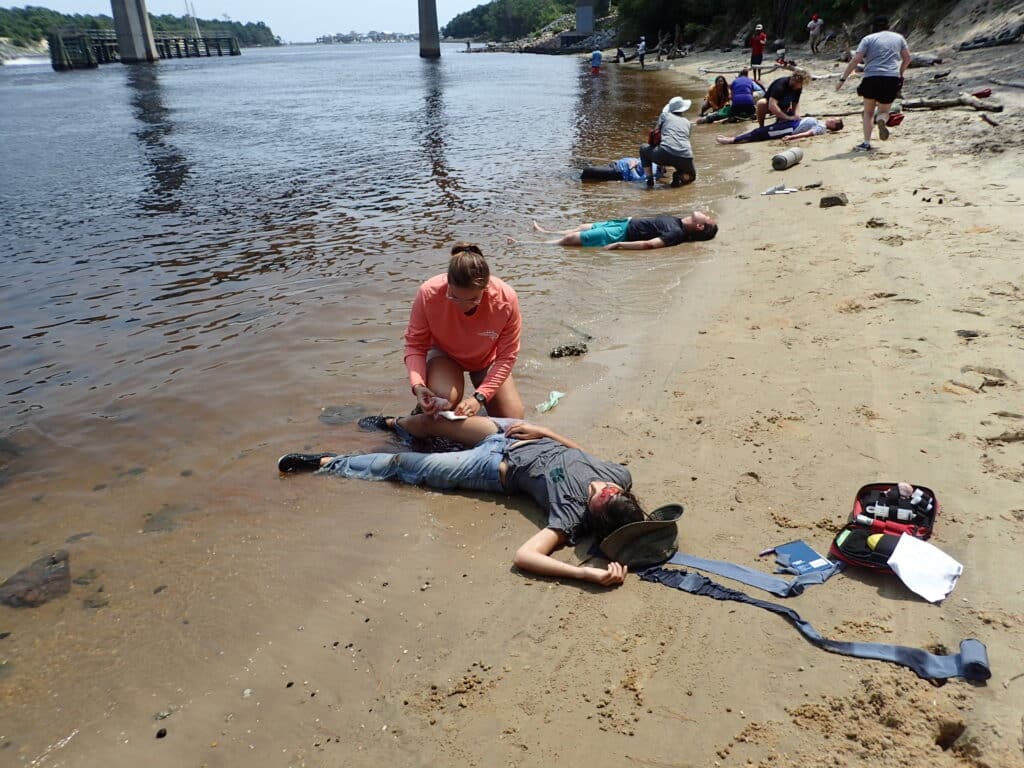
In the context of a mass casualty event, wilderness medicine providers fill all their traditional roles — caring for the injured and improvising to overcome the lack of medical equipment and supplies. However, their role often expands in scope as they face the challenges of assisting multiple patients at the same time suffering from diverse injuries.
Meeting this challenge requires knowledge of the system and resources available, along with an ability think and act quickly and rationally in order to triage patients. That means sorting and prioritizing patients on larger scale, based on the severity and urgency of their medical needs — again in the context of available resources.
Defining “Mass Casualty Incident”
A mass casualty incident (MCI) is any (more…)
Testing for EMT Certification: Past, Present and Future
EMT TrainingEmergency medical technicians (EMTs) play a vital role in the modern healthcare system, providing immediate, life-saving assistance to people experiencing acute medical conditions or traumatic injuries. By rapidly assessing and treating patients in critical situations, EMTs improve survival rates, minimize complications, and optimize treatment outcomes.
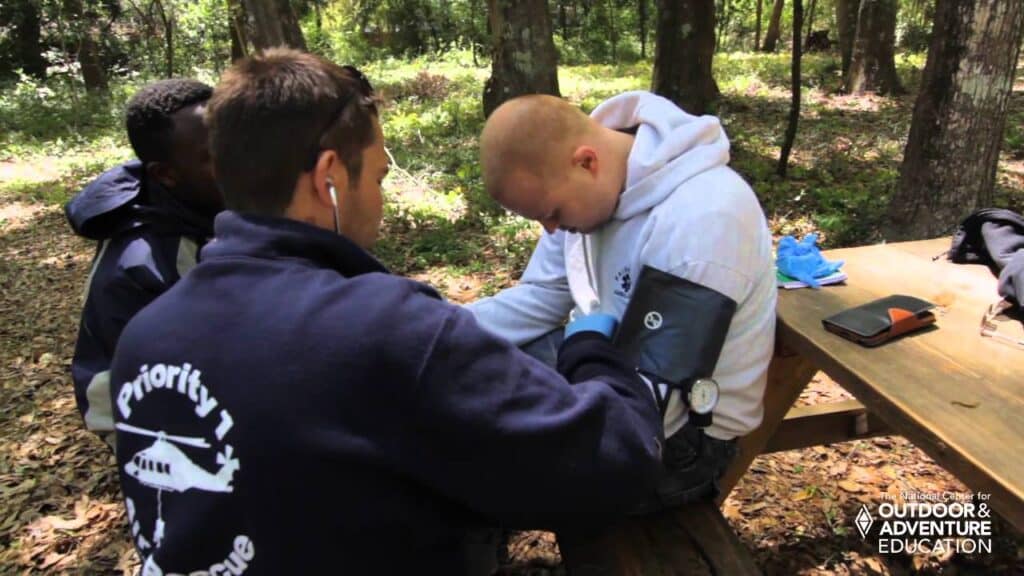
Training, testing, and certification ensure all EMTs have the skills needed to respond to life-threatening emergencies. In this post, we explore the history of EMT training and certification, bring you up to speed on its current state, and look ahead to its future. Why this matters to us here at The National Center for Outdoor & Adventure Education (NCOAE) is because we offer such training for EMTs throughout the U.S.
The Evolution of EMT Testing: Past to Present
EMT testing and certification have evolved over the course of nearly six decades. Formalized training didn’t begin until the late 1960s. It was initiated by the publication of a white paper in 1966 titled, “Accidental Death and Disability: The Neglected Disease of Modern Society.” The paper was in response to increasing trauma and death resulting from traffic accidents in the United States.
Up to that time, ambulance services generally consisted of team members with little to no formal training, with such services often relying on volunteers. And any formalized training and testing that was being done was administered locally by (more…)
The Role of Assessment in Wilderness Medicine
Wilderness MedicineLook, listen, and feel.
If you’ve been around wilderness medicine long enough, you may remember when this was the standard teaching for determining breathing status. You place your hand on the injured party’s stomach (feel), your ear to their mouth (listen), and watch (look) to see whether their chest is rising and falling.
This method remains a foundation for assessing breathing, and its application has been expanded to cover a wider range of injuries and illnesses common in wilderness scenarios.
Look, Listen, and Feel
Look, listen, and feel is still a great way to remember that much of the assessment process (arguably the most important) comes in the form of look (visually inspect), listen (auscultate), and feel (palpate). These three actions are like the bumps on a key that align with tumblers to open a lock. In the context of emergency medicine, they form the key that unlocks the door to assessing the patient’s condition and developing treatment and evacuation plans.
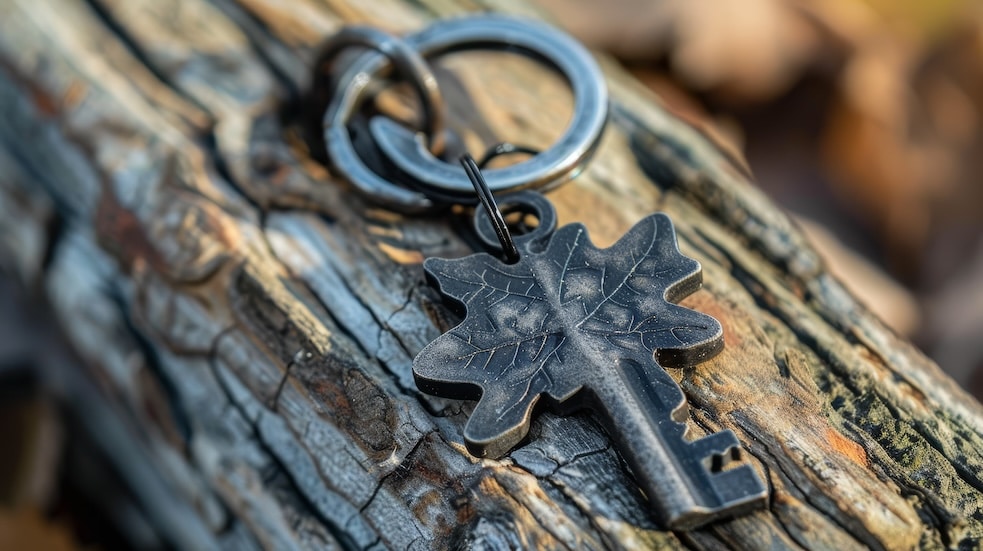
NCOAE’s Patient Assessment Process
“Assessment” is the process of determining the nature, quality, or ability of something. In the context of medical assessment, it refers to determining the realities of the patient’s condition and environment factors in order to provide appropriate care and make well-informed evacuation decisions.
In order to most accurately determine these realities, it is important to use a system of assessment that is easy to remember yet sophisticated enough to avoid overlooking vital data.
While assessment varies depending on the patient’s condition, environmental factors, and the wilderness medicine provider’s level of training and experience, The National Center for Outdoor & Adventure Education (NCOAE) patient assessment process is a wonderful example of a (more…)
The History of Wilderness Medicine and Why That Even Matters
Wilderness MedicineWilderness medicine has been broadly defined as the provision of medical care when environmental conditions play a stronger role in decision making and interventions than the established systems of care.
It’s something we take quite seriously here at The National Center for Outdoor & Adventure Education (NCOAE). We also ensure that all of our field instructors, course directors, and other NCOAE staff hold current certifications in wilderness medicine. On top of that, we teach wilderness medicine courses ourselves.
Editor’s Note: See “What is Wilderness Medicine” here on the NCOAE Blog for a deep dive into defining wilderness medicine.
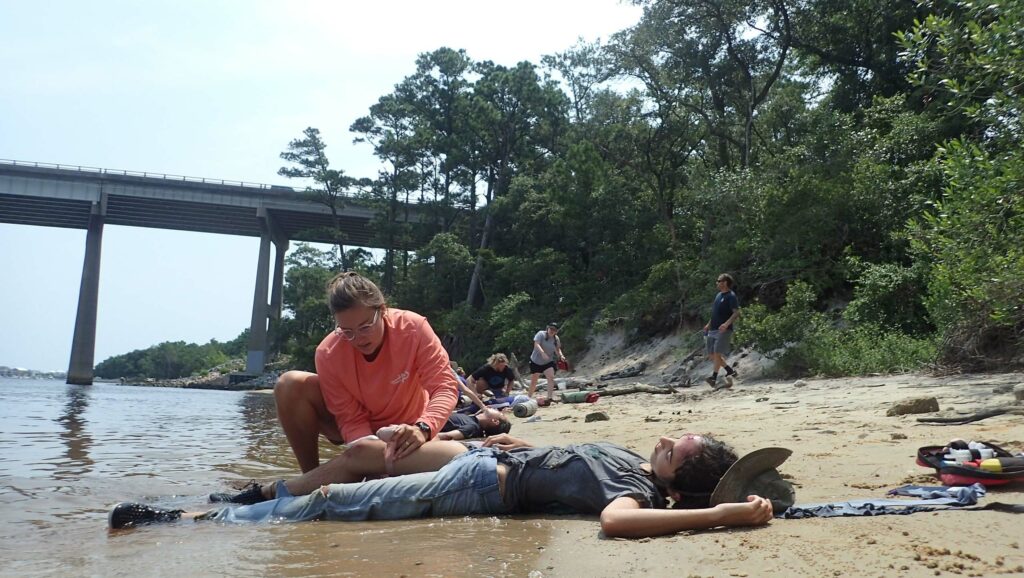
The history of wilderness medicine as we know it today, is generally traced back to the 1980s and the emergence of the Wilderness Medical Society (WMS) in 1983. However, it has been in practice centuries earlier than that. In respect to Western Civilization, caring for the sick and injured in the field has its origin in early Greek and Roman societies. It has certainly been in practice for as long as human beings have been sailing the seas, exploring the world, and engaging in military operations.
Experts in the field of wilderness medicine universally agree that its continued evolution is (more…)
A Fresh Look at Spinal Injury Care in the Backcountry
Wilderness MedicineIn wilderness medicine, the traditional response to a potential spinal injury has emphasized immobilizing the patient to prevent further injury. To this end, emergency responders have been trained to use advanced immobilization techniques and equipment, such as rigid cervical collars and spinal boards in conjunction with manual stabilization.
And while nobody educated in emergency medicine would argue against the importance of motion restriction, the priority is shifting as doctors and emergency personnel consider it in the larger context of overall patient health and safety.
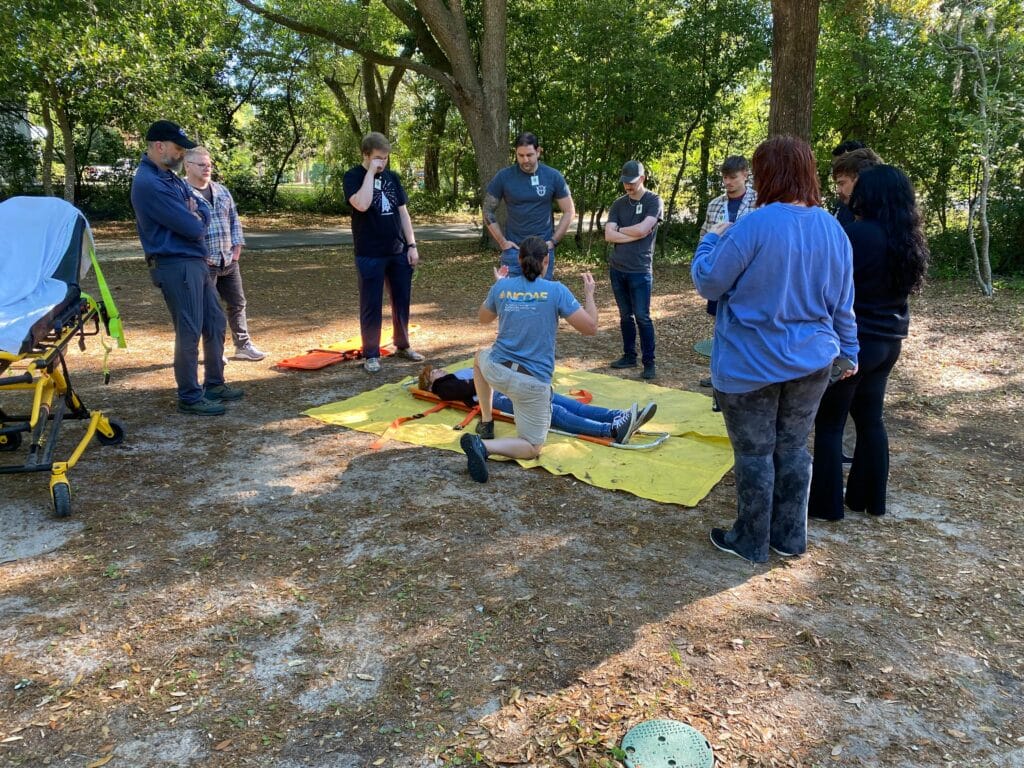
Given the importance of the spine in a person’s overall health, the focus on immobilizing patients with suspected spinal injury is no surprise. The spine protects the spinal cord, which functions like a fiber-optic network to carry signals throughout the body to and from the brain. Interruptions in the continuity of the spinal cord can dramatically impact a person’s ability to move and to interpret and interact with the world.
However, over the last few decades, the medical community has acquired a vast body of evidence concerning care for a person with an obvious or potential spinal injury. As a result, recent years have seen a significant shift in thinking on this subject. The conversation regarding the extent to which a spinal injury is impacted by subsequent treatment and transport has evolved into a rather heated debate that’s (more…)
Wilderness Medicine: Accounting for Challenging Terrain
Wilderness MedicineWhen some hear the term “wilderness medicine,” they think of those rusty out-of-date First Aid kits that they used to carry with them on a personal hiking or camping trip. “As if that thing is going to do any good in an emergency.”
In fact, to the average summer weekend outdoor enthusiast, wilderness medicine is limited to treating minor cuts, scrapes, bruises, sprains, bites and poison ivy. A major tragedy would be the occasional broken bone. But it has always been much more than that.
To realize just how broad wilderness medicine really is, all you need to do is travel back to Antarctica in 1961. That’s when Russian explorer Leonid Rogozov suffered a severe case of appendicitis. Being the only medical doctor on site, he had to perform his own appendectomy. That’s among the extremes of what wilderness medicine is all about.
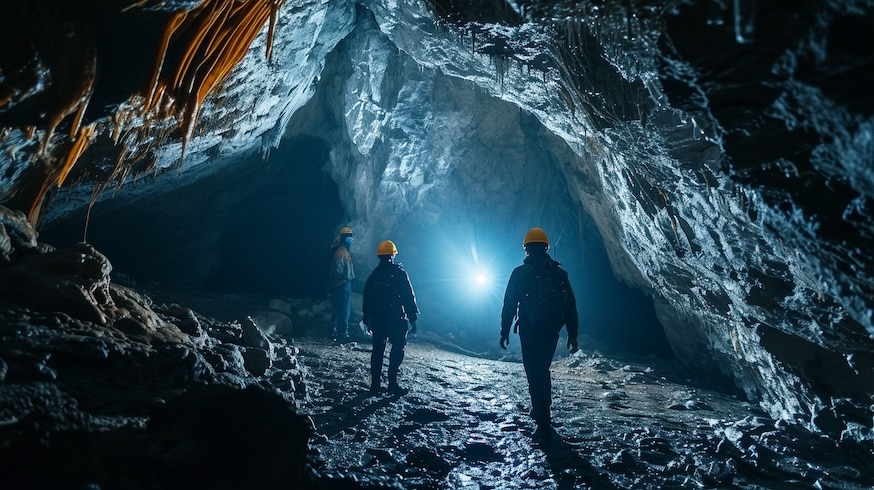
More recently, the Thailand cave rescue shined the spotlight on wilderness medicine. Thousands of rescue workers and medical personnel, including Thai Navy Seals, the national police, doctors, and nurses, rallied to save 12 teenagers and their soccer coach, all trapped in a complex cave system by floodwaters during a heavy rain. Rescuers had to locate and extract 13 people, some of whom couldn’t swim, from a flooded, two and a half mile stretch of caves.
The rescue tested experienced divers who struggled to navigate currents and squeeze through the narrow passages. Rescuers had to (more…)
When to Call — or Not Call — for Help During a Wilderness Emergency
Wilderness MedicineIn wilderness or the backcountry, bad things can happen to even the most experienced of adventurers. Truth is, most illnesses and injuries on the trail can be managed by the adventurer, or with the assistance of someone possessing some training in wilderness medicine.
Of course, some injuries and illnesses do pose a threat to life or limb, and in other cases, the person — who for our purposes we’ll call our “patient” — may not even survive without professional medical intervention. It’s those situations in the grey area that leave many outdoor adventurers wondering, Do we call for help or not? You maybe conflicted for several reasons: pride or overconfidence, embarrassment or reluctance to admit weakness, misjudging the severity of the situation, concerns over medical costs, or perhaps you lack an effective means to contact emergency services.
As the ancient adage suggests: “He who hesitates is lost,” and the objective of this post is to equip you with the knowledge and insight needed to arrive at the right decision faster. Here, you will learn when to call for help, the type of help to call for, and the various means of communication you can use to call for help.
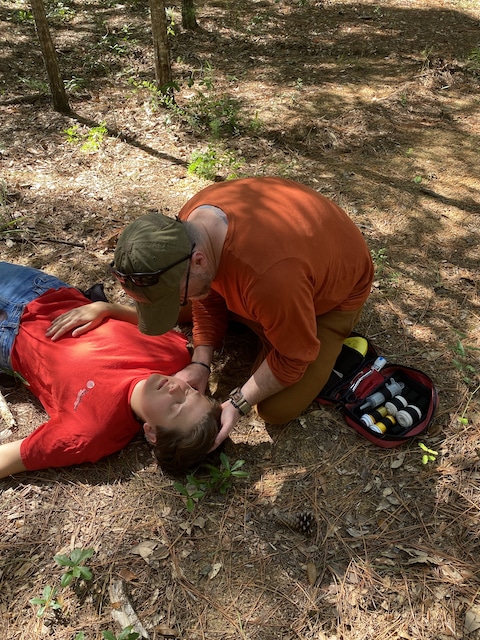
Important! Before embarking on any wilderness or backcountry adventure, leave your itinerary with a trusted individual, along with instructions to contact emergency personnel in the event that you fail to return or call on the scheduled date of your return. If you need a visual on how important this is, watch the 2010 film 127 Hours, which vividly illustrates the torment suffered by Aron Ralston, the rock climber who was forced to amputate part of his own right arm after it was pinned between rocks in an isolated canyon in Utah.
Deciding When to Call for Help In The Wilderness
When you or someone in your group suffers a serious illness or injury, toss your emotions aside and focus on the following factors in deciding whether or not to call for help: (more…)
Evaluating Neurovascular Function in the Backcountry
Wilderness MedicineWhen it comes to emergency medicine — whether in an urban setting or the backcountry — swift and accurate assessments play a pivotal role in determining the severity and progression of an injury and deciding the best course of action.
The decisions you make regarding treatment, evacuation, and transportation in cases of non-obvious threats to life and limb can determine not only whether someone lives or dies, but also their quality of life should they survive the emergency. After all, quality of life is a huge part of being alive. And a beating heart with minimal brain activity doesn’t always meet a person’s definition of “living.”
The National Center for Outdoor and Adventure Education (NCOAE) is a leading provider of wilderness medicine education and certification, and in this post, we’re taking the time to introduce you to the process of evaluating neurovascular function to determine the extent and progression of an injury. By doing so, you can make well-informed treatment, evacuation, and transportation decisions when responding to a medical emergency, no matter the origins of the incident.
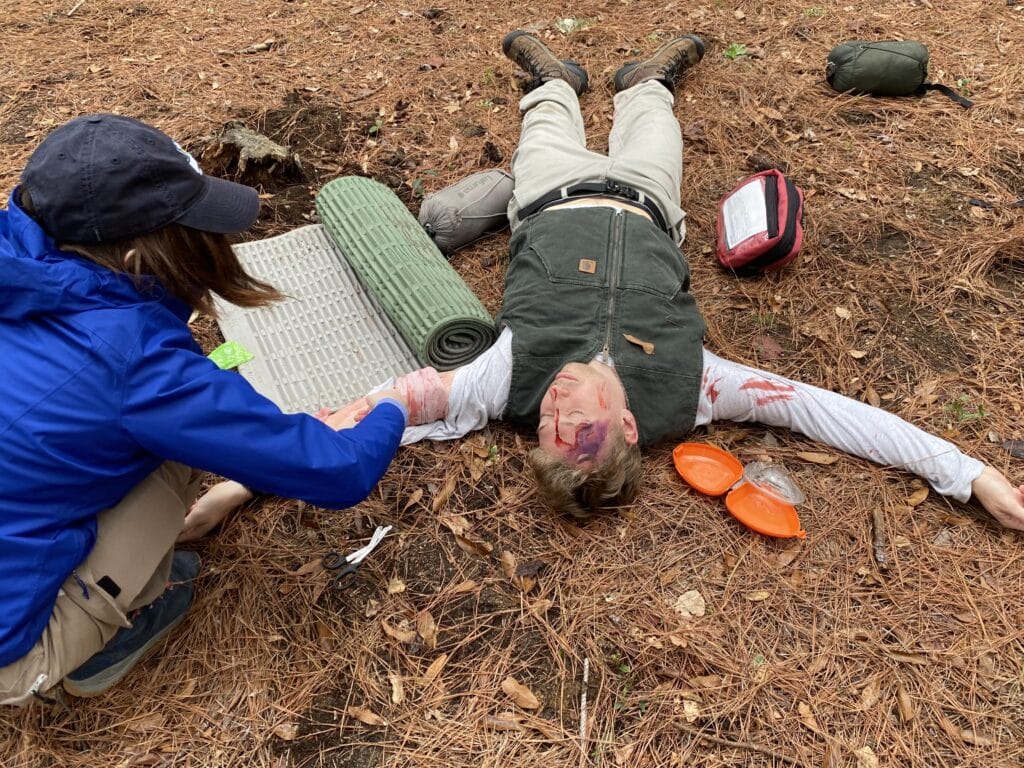
Understanding What a Neurovascular Assessment Entails
A neurovascular assessment is a collection of tests used by medical clinicians, including emergency medical personnel such as Wilderness First Responders and Wilderness EMTs, to determine whether someone is suffering nerve damage or impaired blood flow. Neuro refers to anything related to the body’s nervous system, and vascular refers to anything related to the body’s blood vessels. Neurovascular function encompasses the interplay between the brain, spinal cord, peripheral nerves, and blood vessels that supply oxygen and other vital nutrients to organs, limbs, and tissues. Any disruption of this intricate balance can lead to severe consequences ranging from impaired cognition to more severe conditions such as stroke or the loss of a limb.
Neurovascular status can be determined by simple tests of the following three functions: (more…)
What Is Wilderness Medicine?
Wilderness MedicineWhen the average person encounters the term “wilderness medicine,” they typically assume it is referring to the practice of medicine in a remote or harsh environment with little to no access to medical equipment or supplies.
They may imagine a scenario of providing CPR to someone who suffered cardiac arrest during a whitewater rafting adventure or creating a splint out of a branch and a few strands of twine to help a hiker with a sprained ankle become ambulatory.
While these notions of wilderness medicine aren’t far off the mark, they are limited. In other words, close but no cigar. It’s all the above and more, which makes it a challenge to come up with a clear and comprehensive definition.
Teaching Wilderness Medicine at NCOAE
Here at The National Center for Outdoor Adventure and Education (NCOAE), our wilderness medicine courses begin with a discussion of what wilderness medicine is, as well as what each student hopes to learn from the course. Often, these discussions elicit points of discussion that require an even broader definition of the term.
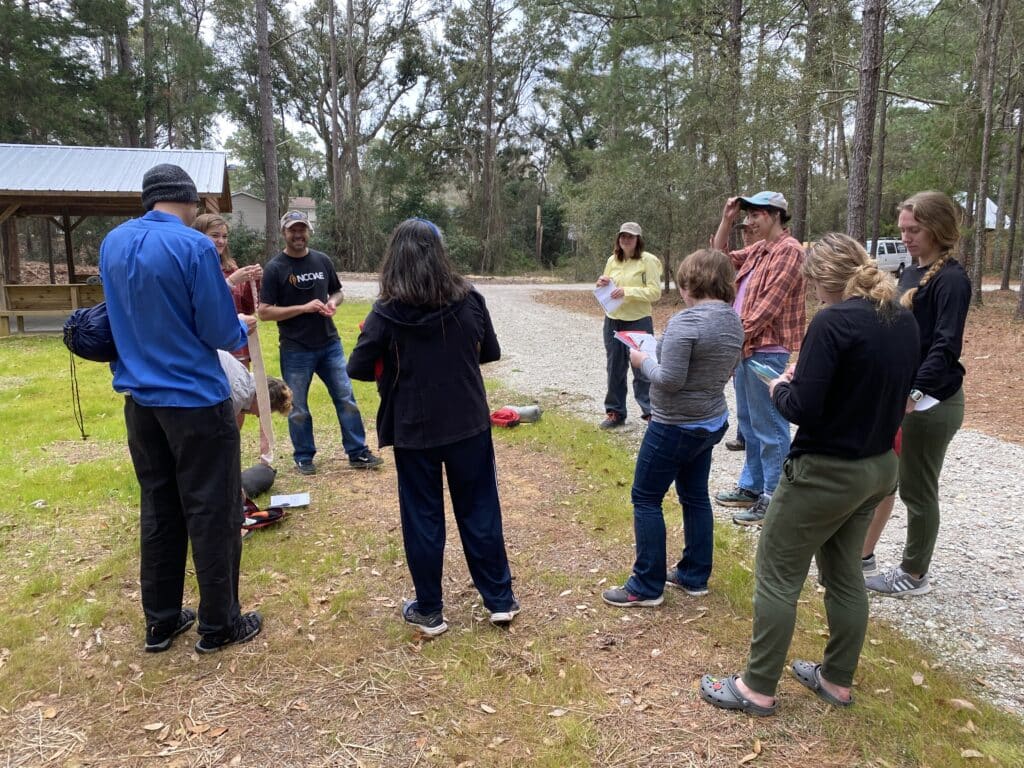
While there’s no universally agreed upon definition of wilderness medicine, certain components set it apart from non-wilderness medicine. For the purpose of this blog post, let’s begin with the following definition:
Wilderness Medicine is provision of medical care when environmental conditions play a stronger role in decision making and interventions than the established systems of care.
Wilderness Medicine encompasses not only the treatment of injuries and illnesses in these settings but also includes preventive measures, survival skills, and the management of environmental hazards such as extreme weather, hazardous terrain, and wildlife encounters.
Wilderness medicine skills and techniques can be applied in a variety of setting, including but not limited to: (more…)
SOAP Notes Keep Wilderness Medicine Clean
Wilderness MedicineIn the context of wilderness medicine, soap and SOAP are both indispensable. An explanation is in order. We’re all familiar with lower-case soap. This noun refers to a substance that’s added to water to remove dirt, grease, grime, and germs from various surfaces, including skin, hair, clothing, pots and pans, and so on.
Soap In The Wilderness
Traditional soap works in two ways — as a surfactant to break water tension, improving water’s ability to penetrate surfaces, and as a molecule that has a love-hate relationship with water. Soap molecules have two ends, one that’s hydrophilic (loves water) and the other that’s hydrophobic (hates water). The hydrophilic end binds to water, while the hydrophobic end binds to anything other than water — dirt, grease, grime, germs. Imagine soap molecules as tiny carabiners that shackle dirt molecules to water molecules to enable the water molecules to usher them away.
In backcountry and wilderness settings, soap plays a vital role in preventing infection and transmission of disease. In fact, scrubbing vigorously with soap and water may be among the most important risk-management technique you practice during your time in the wilderness.
SOAP (Subjective, Objective, Assessment, Plan)
Now let’s move on to the other SOAP — all uppercase — which is an acronym for Subjective, Objective, Assessment, and Plan. As an outdoor educator, field instructor, or wilderness guide, this note-taking procedure is nearly as important as scrubbing your hands regularly with soap and water. This is especially true when you’re dealing with a client injury or illness in a remote setting.
SOAP Notes, which I’ll be covering in this post, separate important information from the chaos and fog of emotion in order to provide clean, uncluttered details for making informed medical decisions and emergency response plans.
With SOAP Notes in hand, field instructors and outdoor educators trained in wilderness medicine, as well as backcountry guides, are better prepared to respond to a medical emergency. They do this by:
- Following an organized, methodical process
- Tracking changes in a patient’s health status
- Keeping a record of assessments, anticipated problems, and any interventions already provided
- Communicating with emergency responders
- Ensuring a seamless transfer of patient care to next-level healthcare providers
- Documenting cases and care for improving organizational outcomes
Here at The National Center of Outdoor Adventure and Education (NCOAE), we developed the SOAP Note form shown below.

Our SOAP Note’s Form
Our SOAP Note form consists of the following seven sections (more…)
Let’s Add Humble to the 5 ‘Umbles’ of Hypothermia
Risk ManagementHypothermia is deadly. There, I said it! This potentially dangerous drop in body temperature is commonly defined as a core body temperature below 95 degrees Fahrenheit (35 degrees Celsius) after dropping from a healthy temperature of about 98.6 degrees Fahrenheit or 37 degrees Celsius.
The slightest variance from the “normal” range can disrupt the body’s ideal operating conditions, known as homeostasis. The negative impact of hypothermia on homeostasis is dramatic and therefore should not be underestimated. Hypothermic progression follows a path, moving first more slowly, then more rapidly toward non-movement and when properly treated, onto death.
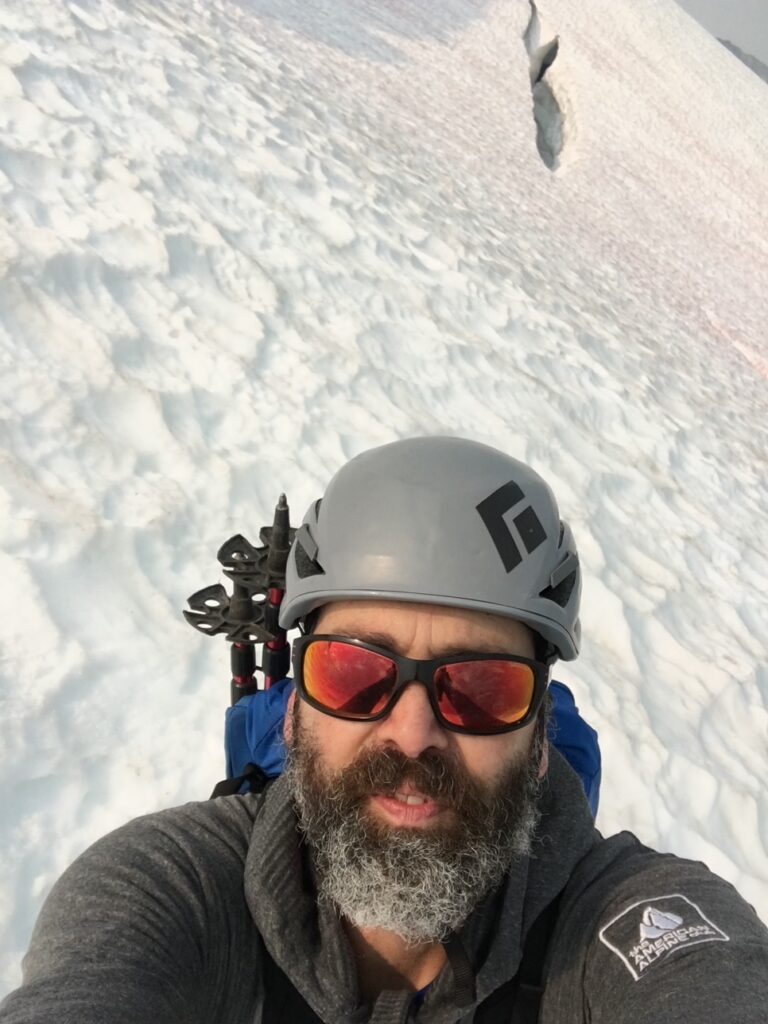
Movement is life. Living things grow, evolve, learn and work to improve their circumstances. Non-living things hold fast to current circumstances unless acted upon by an outside force. As we’ve all experience, movement generates warmth, and this case, it combats hypothermia. A creature that has the appropriate amounts of items necessary for movement will generally maintain a body temperature conducive for life.
These items required for movement include nutrients, health, fitness, clothing, and sometimes technical outdoor tools such as an ice axe and crampons. A breakdown of these items leads to decreased movement and reduced temperature. In this post, we will look at the hypothermic process using the five umbles: (more…)
TALK TO US
Have any further questions about our courses, what you’ll learn, or what else to expect? Contact us, we’re here to help!